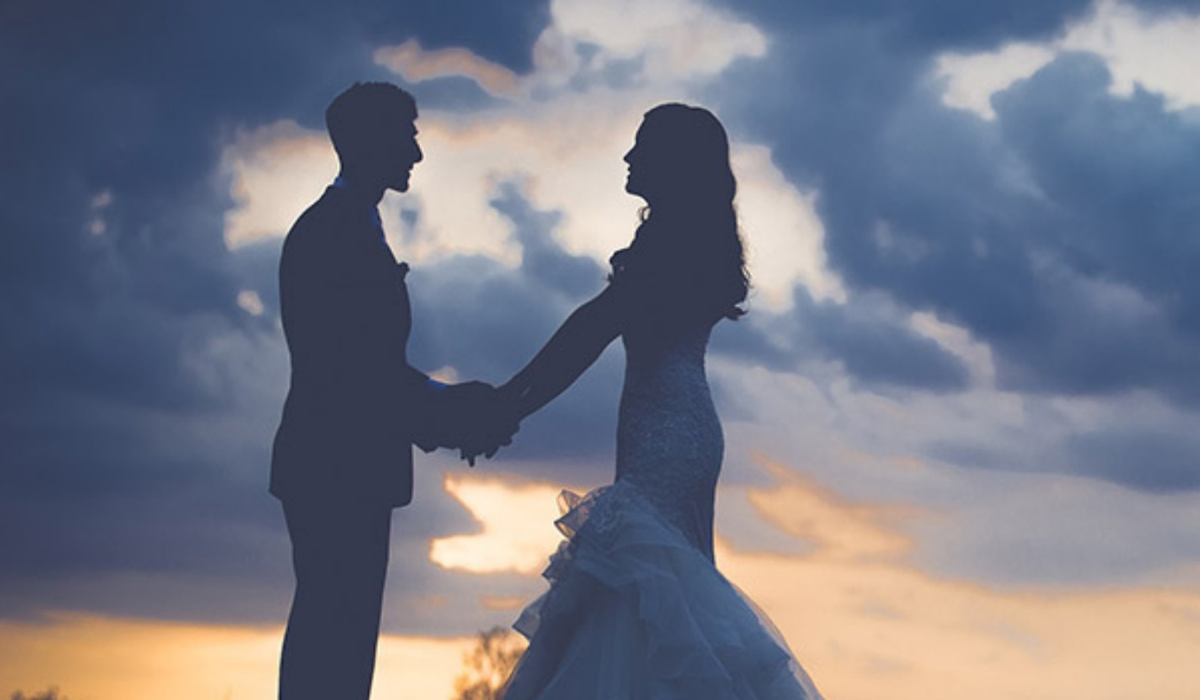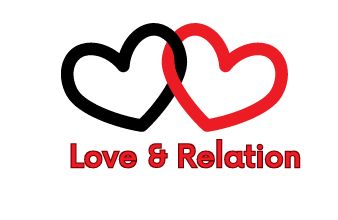Marriage Arrangement Namboku refers to a traditional Japanese system of arranged marriages prevalent in the Edo period. It often involved families matching couples for social and economic benefits.
Marriage Arrangement Namboku played a significant role in Japanese culture during the Edo period. Families prioritized social status, financial stability, and alliances when arranging these marriages. This system ensured that familial and societal obligations were met, often without the couple’s prior consent.
Such arrangements were common among the samurai class and wealthy merchants. Over time, the practice has evolved, but its historical impact remains a crucial part of Japan’s cultural heritage. Understanding Marriage Arrangement Namboku offers insight into traditional Japanese societal structures and family dynamics.
Introduction To Marriage Arrangement Namboku
The Marriage Arrangement Namboku is a traditional practice. It connects families and celebrates cultural heritage. This unique tradition has deep historical roots and rich cultural significance. Let’s explore its origin and importance.
Historical Background
The origins of Marriage Arrangement Namboku date back centuries. Families arranged marriages to strengthen ties. This practice ensured social and economic stability. Over time, it evolved but maintained its core values.
| Period | Key Developments |
|---|---|
| Ancient Times | Marriages arranged by family heads |
| Middle Ages | Inclusion of community leaders in arrangements |
| Modern Era | Adaptation to contemporary norms |
Cultural Significance
Marriage Arrangement Namboku holds great cultural value. It preserves traditions and fosters community bonds. Some key aspects include:
- Respect for Elders: Elders play a vital role in arrangements.
- Community Unity: Strengthens ties within the community.
- Rituals and Ceremonies: Rich with traditional rituals.
These elements make Marriage Arrangement Namboku a cherished tradition. It continues to be an important cultural practice today.
Key Rituals And Ceremonies
The Key Rituals and Ceremonies of a Marriage Arrangement Namboku hold cultural significance. Each step symbolizes unity and love. This section explores these important rituals.
Engagement Rituals
The journey begins with Engagement Rituals. These rituals bond the couple and their families.
- Gift Exchange: Both families exchange symbolic gifts.
- Family Meeting: Families gather to discuss the marriage details.
- Ring Ceremony: The couple exchanges rings to mark their commitment.
Wedding Day Ceremonies
The Wedding Day Ceremonies are full of joy and tradition. They mark the formal union of the couple.
| Ritual | Description |
|---|---|
| Procession | The bride and groom make a grand entrance. |
| Vow Exchange | The couple exchanges vows in front of loved ones. |
| Ring Exchange | They place rings on each other’s fingers. |
| Feast | Everyone enjoys a meal to celebrate the union. |
Each ritual in a Marriage Arrangement Namboku carries deep meaning. These ceremonies bring families together and celebrate love.
Role Of Family And Community
Marriage Arrangement Namboku deeply involves family and community. Their roles are crucial for a successful union. Both offer guidance, support, and resources.
Family Involvement
Families play a significant role in Marriage Arrangement Namboku. They often take the lead in discussions. They ensure that both parties are compatible.
Parents typically handle negotiations. They discuss dowries, wedding plans, and future expectations. They also provide emotional support to the couple.
| Family Role | Responsibility |
|---|---|
| Parents | Negotiations, emotional support, financial aid |
| Siblings | Support, planning, and organizing events |
| Extended Family | Offering advice, moral support |
Community Support
Community support enhances the Marriage Arrangement Namboku experience. It provides a network of assistance and resources.
The community helps in planning and organizing. They also ensure traditions are followed. Community leaders often mediate and offer counsel.
- Help with venue selection
- Assistance in catering and logistics
- Offering traditional music and entertainment
Community involvement creates a sense of unity. It strengthens bonds among all members. Everyone feels part of the joyous occasion.

Credit: jeansato.com
Traditional Attire And Symbols
Marriage Arrangement Namboku is rich in tradition and symbolism. Traditional attire and accessories play a crucial role in the ceremony. They reflect the cultural heritage and values of the community. Each piece of clothing and accessory carries deep meaning and significance.
Bridal Wear
The bride’s attire is usually elaborate and colorful. The traditional dress is a stunning silk kimono. The kimono is often decorated with intricate patterns and designs.
The bride may also wear an obi, which is a wide belt. This belt is tied in a specific manner. The colors of the kimono and obi often symbolize prosperity and happiness.
A white hood, known as a tsunokakushi, is also worn. It symbolizes the bride’s intention to become a gentle and obedient wife. Another essential piece is the Uchikake, an outer robe decorated with gold and silver embroidery.
Symbolic Accessories
In Marriage Arrangement Namboku, accessories hold symbolic meanings.
- Kanazashi: These hairpins are often adorned with flowers and birds.
- Obiage: A sash that ties around the obi for extra decoration.
- Obijime: A cord used to secure the obi, adding another layer of elegance.
The groom’s attire is also symbolic. He wears a Montsuki, a formal black kimono with family crests. The Montsuki is paired with Hakama, wide-legged trousers. These garments symbolize dignity and respect.
Both the bride and groom may carry a sensu, a folding fan. Fans are symbols of prosperity and good fortune.
Music And Dance In Namboku Weddings
The rich culture of Namboku weddings comes alive with music and dance. These elements create a magical atmosphere, connecting the past with the present. The melodies and movements tell stories of love, unity, and celebration.
Traditional Songs
Traditional songs play a crucial role in Namboku weddings. These songs are passed down through generations, preserving the heritage. Song lyrics often speak of love, commitment, and joy. Instruments like drums, flutes, and stringed instruments accompany these heartfelt melodies.
| Song Title | Meaning |
|---|---|
| “Love’s Promise” | Expresses eternal love and devotion |
| “Unity Celebration” | Celebrates the union of two families |
Dance Performances
Dance performances are vibrant and full of energy in Namboku weddings. Each dance tells a story, reflecting the community’s traditions. Dancers wear colorful costumes and use graceful movements to captivate the audience.
- Wedding Dance – Celebrates the union and blessings.
- Harvest Dance – Represents prosperity and abundance.
These performances are not just for entertainment. They symbolize joy, unity, and the blessings for the newlyweds.

Credit: thestylesmagazine.com
Cuisine And Feasting
The Marriage Arrangement Namboku is a beautiful blend of traditions. One of the most important aspects of this arrangement is the cuisine and feasting. This section will explore the rich and diverse culinary traditions that are part of these celebrations.
Traditional Dishes
The traditional dishes served during the Marriage Arrangement Namboku are a feast for the senses. Here are some of the most popular dishes:
- Sushi: Fresh fish and rice, crafted with care.
- Tempura: Lightly battered and deep-fried vegetables and seafood.
- Sashimi: Thin slices of raw fish, served with soy sauce.
- Miso Soup: A warm, comforting soup made from fermented soybean paste.
- Ramen: Noodles in a rich broth with various toppings.
These dishes are not only delicious but also hold cultural significance. They are carefully prepared to honor the traditions of the Namboku region.
Feasting Customs
The feasting customs during the Marriage Arrangement Namboku are deeply rooted in tradition. Here are some key customs:
- Seating Arrangements: Guests are seated based on their relationship to the couple.
- Serving Order: Elders are always served first, showing respect.
- Toasting: Toasts are made with sake to celebrate the union.
- Sharing Food: Dishes are often shared, symbolizing unity and togetherness.
- Music and Dance: Traditional music and dance accompany the feast, adding to the joyous atmosphere.
These customs make the feasting experience unique and memorable. They reflect the values and culture of the Namboku people.
The cuisine and feasting during the Marriage Arrangement Namboku are a true celebration of culture and tradition. They bring people together in a beautiful and meaningful way.
Modern Adaptations
Marriage Arrangement Namboku has evolved over the years. Modern adaptations have brought fresh changes. These changes make the tradition relevant today.
Blending Tradition With Modernity
Modern couples blend tradition with contemporary elements. They honor old customs while adding personal touches. This blend ensures the ceremony feels unique and relevant.
| Traditional Element | Modern Adaptation |
|---|---|
| Traditional attire | Fusion of old and new styles |
| Ancient rituals | Incorporating personal vows |
Challenges And Changes
Modern adaptations face challenges. Families may resist changes. Couples need to find a balance. They should respect tradition while embracing modernity.
- Balancing old customs with new ideas
- Addressing family expectations
- Ensuring everyone feels included
Changes bring new opportunities. Couples can express their individuality. They can create a memorable and unique ceremony.
Preserving The Tradition
The tradition of Marriage Arrangement Namboku is rich and vibrant. Families take pride in preserving these cultural customs. They ensure the values and rituals remain intact.
Efforts To Maintain Customs
Families work hard to keep the traditions alive. They teach the younger generation the importance of Namboku customs. Elders share stories and experiences to pass down the values.
- Storytelling: Elders narrate tales of past marriages.
- Cultural Events: Families organize events to celebrate these traditions.
- Workshops: Communities hold workshops for young couples.
Communities also collaborate to maintain these customs. They organize meetings to discuss the importance of Namboku traditions. These efforts ensure the customs are not forgotten.
Future Of Namboku Marriages
The future of Namboku marriages looks promising. Young people are eager to learn about their heritage. They participate actively in cultural events.
- Young couples show interest in traditional ceremonies.
- Technology helps in spreading awareness about Namboku customs.
- Schools include cultural education in their curriculum.
The integration of modern tools helps preserve these traditions. Social media platforms play a significant role. They help in sharing stories and experiences widely.
| Effort | Impact |
|---|---|
| Storytelling | Connects generations |
| Cultural Events | Promotes community bonding |
| Workshops | Educates the youth |

Credit: allinternetchicks.com
Frequently Asked Questions
Are Arranged Marriages Allowed In Japan?
Yes, arranged marriages are allowed in Japan. They are less common today but still practiced in some families.
What Are The Three Types Of Arranged Marriages?
The three types of arranged marriages are traditional arranged marriages, semi-arranged marriages, and love-arranged marriages. Traditional arranged marriages involve families making the match. Semi-arranged marriages allow individuals some input. Love-arranged marriages start with mutual attraction and receive family approval.
Is Arranged Marriage Still Legal?
Yes, arranged marriage is still legal in many countries. It must involve the free consent of both parties.
What Is A Legal Arrangement To End A Marriage?
A legal arrangement to end a marriage is called a divorce. It involves court approval and legal documentation.
What Is Marriage Arrangement Namboku?
Marriage Arrangement Namboku is a traditional matchmaking practice in certain cultures, focusing on compatibility and family values.
How Does Namboku Matchmaking Work?
Namboku matchmaking involves families discussing potential matches, considering factors like background, values, and compatibility.
Why Is Namboku Important In Marriage?
Namboku ensures that the couple shares similar values and backgrounds, promoting a harmonious and stable relationship.
Conclusion
Marriage Arrangement Namboku offers a beautiful blend of tradition and modernity. Embracing these customs can strengthen relationships and community bonds. Explore this unique cultural practice to enrich your understanding of marriage. Celebrate love with respect and tradition, ensuring a lasting and meaningful union.
Discover the beauty of Marriage Arrangement Namboku today.


Leave a Reply